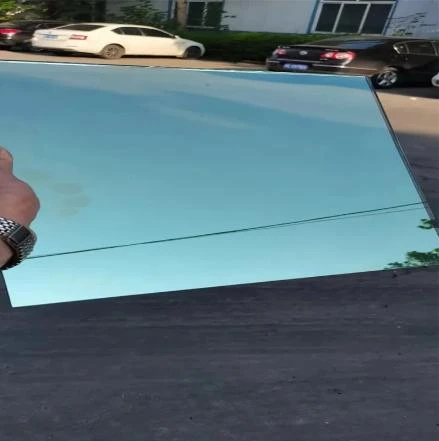Nov . 09, 2024 11:40 Back to list
Innovative Properties and Applications of Low Iron Glass in Modern Architecture and Design
Understanding Low Iron Glass Properties, Applications, and Benefits
Low iron glass is a specialized type of glass that has a reduced level of iron oxide, resulting in enhanced clarity and transparency. Unlike standard glass, which has a greenish tint due to its iron content, low iron glass offers a much clearer view, making it ideal for a wide range of applications, particularly in architecture, display cases, and electronics.
Properties of Low Iron Glass
The primary characteristic that sets low iron glass apart from regular glass is its exceptional optical clarity. The reduced iron content allows over 90% of visible light to pass through, compared to the approximately 80% light transmittance of regular glass. This high transparency gives low iron glass a distinct advantage in applications where aesthetics and purity of light are essential.
In addition to its clarity, low iron glass exhibits similar physical properties to standard glass, including good mechanical strength, thermal resistance, and chemical durability. This makes it a versatile material that can be processed in various ways, including cutting, polishing, and laminating.
Furthermore, low iron glass can be produced in various thicknesses and sizes, allowing it to be tailored to specific requirements. When combined with other materials, such as coatings or films, it can also provide enhanced functionalities like UV protection, anti-reflective properties, or energy efficiency.
Applications of Low Iron Glass
Low iron glass has found applications across numerous industries
. In architecture and construction, it is often used for façades, skylights, and curtain walls, where the goal is to maximize natural light while maintaining an unobstructed view. Buildings employing low iron glass not only benefit from enhanced visual appeal but also from improved energy efficiency as they can harness more daylight.low iron glass

In the retail sector, low iron glass is widely used in display cases and shop windows. Retailers prefer this type of glass for its ability to showcase products without distortion or color alteration, thereby enhancing the shopping experience. The use of low iron glass helps create an inviting atmosphere that attracts customers and showcases the merchandise effectively.
Another significant application of low iron glass is in solar energy technologies. Photovoltaic panels require high transparency to capture sunlight efficiently. Using low iron glass instead of regular glass can enhance the performance of solar panels, leading to greater energy conversion rates and improved overall effectiveness of solar power systems.
In the electronics industry, low iron glass is commonly utilized in the production of high-end displays, such as those found in televisions and smartphones. The optical clarity and reduced reflection properties make it ideal for screens that require high levels of visibility and detail.
Benefits of Low Iron Glass
The benefits of low iron glass extend beyond aesthetics and performance. By enabling greater light transmittance, it reduces the need for artificial lighting, thereby decreasing energy consumption in buildings and facilities. This aligns perfectly with sustainability goals and the growing trend of green building design.
Moreover, low iron glass is also recyclable, making it an environmentally friendly choice for various applications. Glass is one of the easiest materials to recycle, and low iron glass can be processed without losing its superior properties. This adds to the sustainability of projects that utilize this type of glass, making it a responsible choice for modern construction and design.
Conclusion
In summary, low iron glass is a remarkable material that offers numerous advantages over standard glass. Its exceptional clarity, versatility, and environmental benefits make it suitable for a wide range of applications, from architectural designs to display cases and solar panels. As the demand for high-performance materials continues to grow, low iron glass stands out as an optimal choice that balances aesthetics, functionality, and sustainability. Its ability to enhance visual aesthetics while contributing to energy efficiency positions it as a vital component in the future of design and construction. As technology advances, we can expect even more innovative uses for low iron glass across different industries.
-
Safety and Style with Premium Laminated Glass Solutions
NewsJun.24,2025
-
Reinvents Security with Premium Wired Glass
NewsJun.24,2025
-
Premium Float Glass Line for Modern Architecture
NewsJun.24,2025
-
Low Emissivity Glass for Energy-Efficient Architecture
NewsJun.24,2025
-
High-Performance Insulated Glass Solutions for Modern Architecture
NewsJun.24,2025
-
Elevates Interior Style with Premium Silver Mirror
NewsJun.24,2025
Related PRODUCTS














